SEVERE HAIR LOSS
It takes an extreme degree of hair loss for BHT to become an option. There are a few occurrences that make this cosmetic nightmare a reality. They include:
- Advanced pattern baldness
- Scalp hair exhausted from preceding hair restoration surgeries
- A burn or accident
Male Pattern Baldness
Male pattern baldness, known also as androgenic alopecia, is an endemic condition leaving millions of men bald and unhappy. It is those unfortunate souls with a family history of weak androgen receptors (carried forth through the X chromosomes of Mom or Dad), who suffer the wrath of DHT, a hormone that shrinks vulnerable hair follicles amid the scalp—hair follicles that are left vulnerable by weak androgen receptors. Even a long family line of bald men can’t prepare someone for the hardship of severe hair loss. But body hair procedure videos showing successful restoration can reignite lost hope.
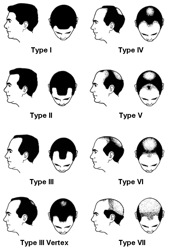
Other Causes
Outlying causes of severe baldness necessitate hair repair surgery to correct scarring, disfigurement, and restore density. Whether caused by an accident, burn, or botched hair restoration surgery, thousands of men are left with a depleted scalp donor supply and require body hair as a secondary source. Amid surgical procedures, the most common sources of this type of hair loss are:
- Punch grafting
- Scalp reduction
- Temporoparietal-occipital flap surgery
- Strip harvesting (FUT)
Common subpar results of these procedures include a backward or pluggy hairline, slot formation, “doll’s hair,” strip scars, and punch scars.
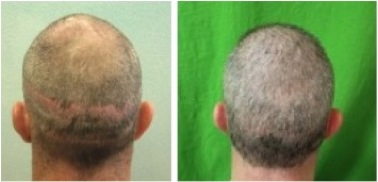
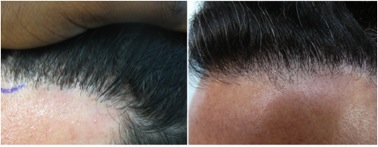
HAIR RESTORATION WITH BODY HAIR TRANSPLANT
In the 1990’s, a hair restoration method called follicular unit extraction (FUE) came along. It eliminated the strip scar and became popular for its individual graft excision—a more sophisticated approach to hair transplant. This would be the basis for the results we see in today’s body hair transplant videos. BHT uses the .8 to 1.2mm punch to extract hair from almost anywhere on the body. Healing time is quick because there is no need for scalpels or wound closures of any kind.
This minimally invasive technology facilitates the removal of hair from the legs, arms, stomach, chest, shoulders, and beard. And because the donor pool is so wide, the unique hair characteristics of different areas become idyllic for use in certain areas of the scalp. For example, finer leg hair makes for a supreme aesthetic result along the hairline, while thicker beard hair is a great source for creating global density.
Additionally, a highly skilled body hair transplant doctor will extract the hairs in a diffuse pattern, leaving no bald patches and cosmetically insignificant scarring in the donor area.
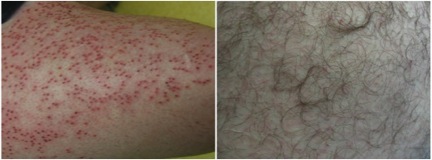
BODY HAIR TRANSPLANT VIDEOS
Body hair transplant videos are an ideal resource for any candidate of this surgery. The sophistication and newness of the technique make it slow to become a global resource. Thus, finding a surgeon who can truly execute a superior BHT procedure is a challenge. Videos provide testimony to the surgeon’s expertise, and will lead you to the best one. Photos also provide valuable insight.
Many doctors may claim to have the know-how to perform BHT, but certain criteria confine the pool to only a small number. First of all, they must be practitioners of FUE and be proficient with handheld tools. Beyond that, they must have years of previous experience, the maximum level of training, unrivaled medical skill, and matchless artistic talent. Lastly, they must always have the videos and photos to substantiate their claims of excellence.
Before and after videos should show natural hairline design, thorough crown whorl detail, evenly spaced density, adequate coverage and an incredible overall transformation. Videos must always be filmed with a focused lens, in clear lighting, and show various angles of the patient’s scalp. Be wary of clinics that edit their video footage and/or retouch their photos for enhancement.
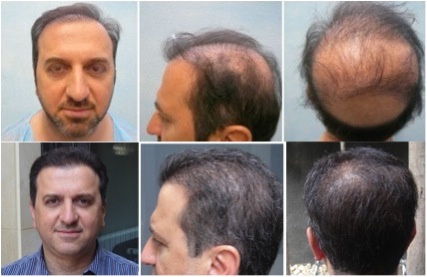
FAQ
Who is a candidate?
Candidates are those who have inadequate scalp donor hair, substantial body hair, and are over the age of twenty-four. Also, they must have no allergies to anesthesia, no history of blood clotting irregularities, and no propensity for scarring. must first have little or no scalp donor hair to speak of. Following this, they must have ample body hair to supply the surgery. General hair transplant requires candidates to have no anesthesia allergies, no blood clotting irregularities, and no scarring tendencies. People with tightly curled or kinked hair follicles are not ideal as these make excision more complicated.
Are there any drawbacks?
There are two main drawbacks to body hair use. One is that body hair has a lower long-term graft survival rate than scalp hair after transplantation. The other is that body hair will act as it always did; in other words, beard hair transplanted to the scalp will retain its innate color, texture, length, and growth rate. This makes blending more of a challenge.
If you are interested in learning about more real life examples of hair repair, here is a patient example involving 14,000 grafts. Click here to read more.

